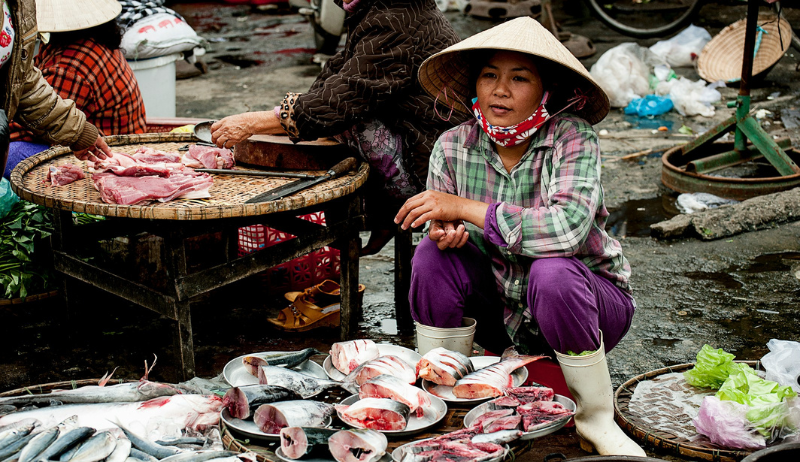Quality of Indonesia’s Skipjack Tuna and Its Impact on International Market Prices
November 13, 2024

Quality of Indonesia’s Skipjack Tuna and Its Impact on International Market Prices
Indonesia is one of the world's largest producers and exporters of tuna, with skipjack tuna (Katsuwonus pelamis) being a major component of its fishery exports. Skipjack tuna is prized for its versatility and value in various global markets, particularly in the production of canned tuna and sashimi. However, the quality of this tuna plays a significant role in determining its value on the international market. In this article, we will explore the factors that influence the quality of Indonesia’s skipjack tuna and examine how this quality directly affects international market prices.
The Importance of Skipjack Tuna in Indonesia's Economy
The tuna industry is a key pillar of Indonesia’s maritime economy. As one of the largest exporters of tuna globally, Indonesia's skipjack tuna is exported to major markets including Japan, the United States, the European Union, and other Asian countries. In addition to its economic value, tuna plays an important role in the livelihood of millions of Indonesians, particularly those involved in fishing and seafood processing industries.
The production and export of skipjack tuna contribute to both the national economy and the well-being of local communities. In many coastal regions of Indonesia, tuna fishing is a primary source of income. As the demand for tuna continues to grow globally, maintaining high quality standards in skipjack tuna production has become increasingly important to Indonesia’s competitive edge in the international market.
Factors Affecting the Quality of Indonesia’s Skipjack Tuna
Skipjack tuna, like any seafood, is highly sensitive to environmental and handling conditions. Its quality can be compromised at multiple stages, from the moment it is caught in the ocean to its eventual processing and export. Below are the key factors that influence the quality of Indonesia's skipjack tuna:
1. Sustainable Fishing Practices
The method by which skipjack tuna is captured plays a significant role in its quality. Sustainable fishing practices not only ensure that fish populations remain abundant for future generations but also directly affect the health of the fish. The most common fishing methods used in Indonesia include longline fishing, purse seining, and pole-and-line fishing. These methods, when carried out responsibly, help minimize bycatch and physical damage to the fish.
Additionally, tuna caught in the open ocean may experience less stress compared to tuna caught near coastal areas, resulting in higher-quality meat. More sustainable methods such as pole-and-line are often preferred for ensuring that the tuna caught is of premium quality. These methods are seen as less traumatic for the fish, resulting in better flavor and texture.
2. Post-Catch Handling and Storage
Once tuna is caught, how it is handled and stored is crucial for maintaining its quality. Improper handling during transport can lead to spoilage, loss of freshness, or damage to the flesh. It is important that tuna is immediately iced down or quickly frozen after being caught to preserve its freshness. In Indonesia, where tuna is often caught far from the shore, tuna is typically chilled in holds of the fishing vessels or quickly frozen at sea.
The speed and quality of the freezing process are particularly important. Tuna that is frozen too slowly or inadequately can suffer from freezer burn, which affects the texture and overall quality of the fish. Freezing tuna as quickly as possible locks in the freshness and helps preserve its natural flavor and color, which are critical factors when it reaches international markets.
3. Quality Control in Processing
Indonesia's skipjack tuna undergoes various stages of processing before reaching international markets. These stages include cleaning, filleting, and packaging, as well as the production of canned tuna and other value-added products. Strict quality control standards are implemented at each stage to ensure that the final product meets the requirements of international buyers. This includes regular inspections of the fish for any signs of disease, contamination, or deterioration.
In the case of canned tuna, the quality of the raw fish will influence the final product. Tuna that is processed with minimal delay after capture retains better texture, color, and nutritional content. Furthermore, value-added products such as tuna steaks, sashimi, and dried tuna are also subject to these same high-quality standards.
The Influence of Skipjack Tuna Quality on International Market Prices
Indonesia’s skipjack tuna has a significant influence on the global tuna market. The quality of the tuna directly impacts its price on the international stage. High-quality tuna is sought after by global buyers, especially those in premium markets such as Japan, the United States, and the European Union. These regions demand the freshest and best-quality fish for use in products like sushi, sashimi, and high-end canned tuna.
On the other hand, low-quality skipjack tuna—often characterized by poor handling, slow freezing, or contamination—will typically fetch lower prices. In some cases, poor-quality tuna may be rejected by international buyers altogether, leading to wasted resources and financial losses for Indonesian exporters.
Price variations are also influenced by other global market trends. For example, when demand for tuna increases in certain countries, high-quality tuna prices rise, especially if the supply is limited. Additionally, economic conditions, trade regulations, and changes in consumer preferences (such as a shift toward sustainable or organic products) can all influence the price of Indonesia’s skipjack tuna on the world market.
The Role of Supply Chain and Logistics
In addition to the fishing and processing stages, the efficiency of the supply chain and logistics also plays a vital role in maintaining tuna quality. With a perishable product like skipjack tuna, the ability to transport it quickly and efficiently to international markets is crucial. Delays in transit, improper packaging, or long storage times can lead to a loss of quality and ultimately affect the price at which it is sold.
To remain competitive, Indonesian exporters must continuously invest in improving cold-chain logistics and enhancing supply chain operations. This includes better refrigeration systems, faster shipping methods, and improved infrastructure to minimize delays and ensure the tuna reaches international buyers in optimal condition.
Global Demand for Sustainable Tuna
One of the key trends in the global tuna market is the increasing demand for sustainably sourced seafood. Many consumers and businesses are now prioritizing products that are certified by sustainability standards, such as the Marine Stewardship Council (MSC). Indonesia has made significant strides in adopting more sustainable fishing practices to meet these growing demands. By adhering to these standards, Indonesian tuna exporters can access premium markets and command higher prices for their high-quality products.
Furthermore, international buyers are increasingly concerned with the environmental and social impact of the tuna supply chain. Therefore, Indonesia’s tuna industry must continue to focus on sustainability, ensuring that both the quality of the fish and the health of the marine environment are maintained.
Conclusion
Indonesia’s skipjack tuna industry plays a pivotal role in the global tuna market, and the quality of its tuna directly influences international market prices. By adopting sustainable fishing practices, improving post-catch handling, maintaining rigorous quality control, and investing in logistics and supply chain improvements, Indonesia can maintain its position as a leader in the global tuna market. As global demand for high-quality and sustainably sourced tuna continues to grow, Indonesia's tuna industry must continue to innovate and prioritize quality to remain competitive and meet the needs of international buyers.

 English
English Chinese
Chinese